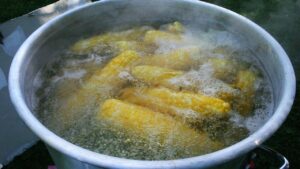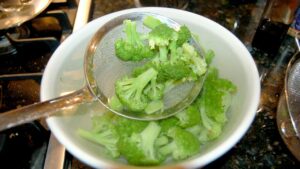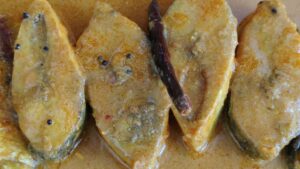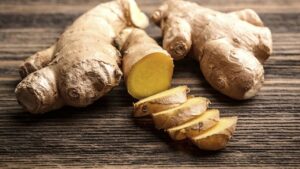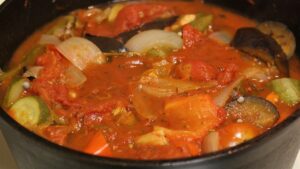What is Steaming?
Steaming is a cooking method that utilizes hot steam to cook food. It is one of the oldest cooking techniques and is known for retaining the texture, color, and nutritional value of the food.
The temperature for steaming is typically 212°F (100°C), similar to boiling water, but it can be increased under high pressure. Steaming is commonly used to cook fish, Asian dumplings, and a variety of other dishes across different cuisines.
Key Takeaways:
- Steaming is a versatile and ancient cooking method that retains the texture, color, and nutrients of food.
- Steaming can be done using various methods, including steam ovens, en papillote, microwave steaming, and steamer baskets.
- Steaming offers benefits such as preserving nutrients, enhancing flavors and colors, reducing the risk of overcooking, and requiring minimal oil.
- Examples of steamed dishes include vegetables, rice, poultry, seafood, dumplings, cakes, and desserts.
- In Indian cuisine, steaming is commonly used for dishes like steamed rice, dhokla, idli, modak, patra, pittha, steamed fish, and steamed vegetables, contributing to the flavors and nutritional value of the cuisine.
Understanding Steaming
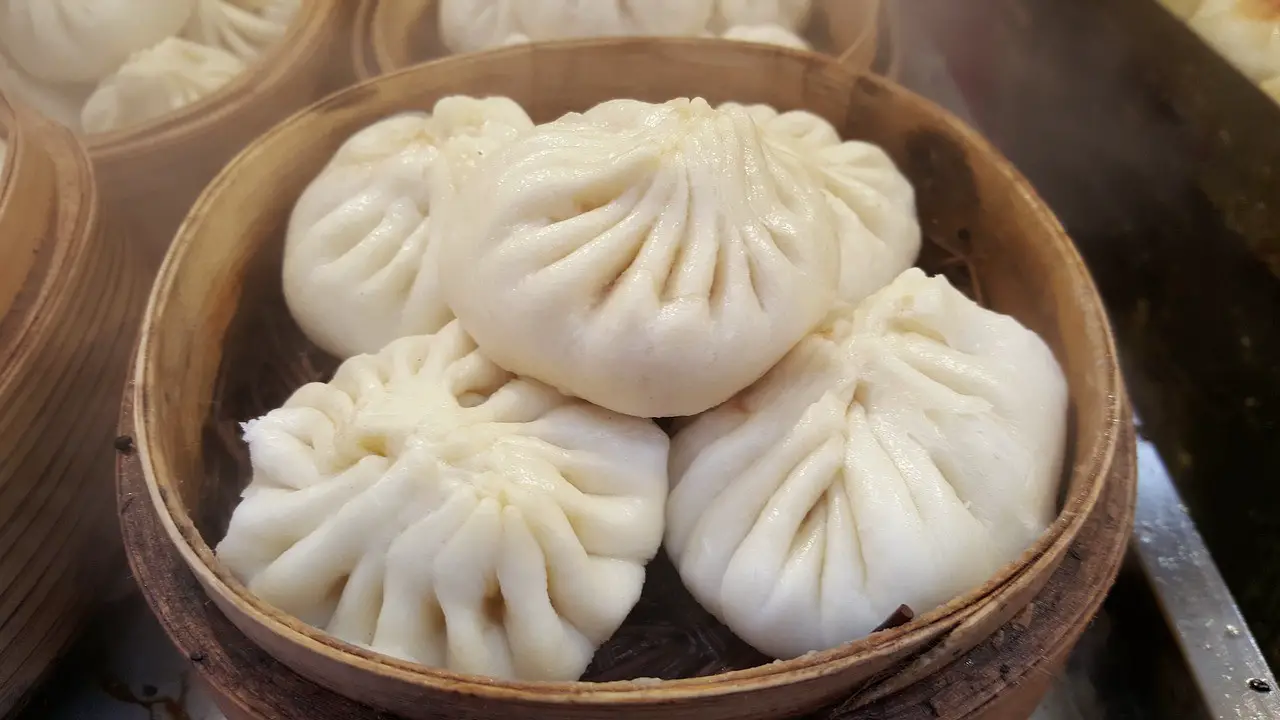
Steam cooking traces can be found as far back as the Bronze Age in Sardinia and Italy. However, it was first pioneered in China around 5,000 BCE near the Yellow Valley River.
Throughout history, different cultures have used various methods for steam cooking, including bamboo steamers in East Asian cuisine, plastic-hybrid and silicone steamers, and classic steamers constructed from bamboo in Cochise County, Arizona.
Steaming is typically done using a steamer basket placed over a pot of liquid on a stovetop.
The food to be cooked is placed in the steamer basket, and the steam produced by the liquid cooks the food gently.
Although steaming is a slower process, it requires periodic monitoring to prevent overcooking.
Benefits of Steaming
Preservation of nutrients: Steaming is considered a hygienic cooking process that helps retain the nutritional value of the food without the need for oil or fat.
Enhanced flavor and color: Steaming brings out the natural colors and flavors of the food, particularly vegetables, resulting in tender and vibrant dishes.
Reduced risk of overcooking: While it is still possible to overcook food while steaming, the risk is lower compared to other cooking methods. With proper attention and monitoring, steaming allows for precise cooking.
Oil-free cooking: Steaming eliminates the need for oil, making it a healthier cooking option that requires minimal stress and cleanup.
Quick and cost-effective: Although steaming is a slow process, it is relatively quick and inexpensive compared to other cooking methods, requiring minimal ingredients.
Methods of Steaming
There are four primary methods of steaming:
Steam Ovens: Modern steam ovens are designed specifically for steaming food, offering energy-efficient and fast cooking. They can be used to cook rice, dumplings, tofu, vegetables, and more.
En Papillote (Paper Bag/Packet): This method involves wrapping food in baking paper, leaves, or aluminum foil to create a seal that traps steam and cooks the food evenly. It is often used for cooking vegetables and fish with aromatic spices.
Microwave Steaming: Microwave steaming is a simple and convenient method where food is wrapped in foil with holes poked in the top. Liquid can be added if necessary, and the food is cooked for a few minutes.
Steamer Baskets: This traditional method involves using a steamer basket placed over boiling water in a saucepan. The food is placed in the steamer basket, and the steam cooks it without altering its position.
Steamer baskets are commonly used in Chinese cuisine for cooking dim sum, dumplings, and other dishes.
Types of Steaming
The steaming process can be categorized into two methods: high-pressure steaming and low-pressure steaming (also known as atmospheric steaming).
High-Pressure Steaming: High-pressure steaming involves using equipment that prevents steam from escaping the food, resulting in a more intense steaming process.
Low-Pressure Steaming: In low-pressure steaming, food is steamed indirectly or directly using the atmospheric pressure of the surrounding moisture.
Steps in Steaming
Follow these four steps for a successful steaming process:
- Fill a large pot or wok with at least 1.5 inches of water and bring it to a boil.
- Place your vegetables in a steamer basket or on a plate wrapped with baking paper. Position the steamer over the pot or wok.
- Ensure that the bottom of the steamer is not in contact with the water, allowing steam to pass through. Lower the steamer onto the pot or wok.
- Cover the vegetables or ingredients completely, preventing steam from escaping and allowing them to steam thoroughly.
Tips for Better Steaming
Here are some useful tips to enhance your steaming experience:
- Prepare the food beforehand by adding spices, oiling the bottom of the steamer, and marinating meat or fish.
- Ensure a tight and airtight seal on the steamer to prevent steam from escaping.
- Enhance the steaming liquid by adding herbs, small chicken cubes, or other flavoring ingredients.
- Avoid overcooking by being mindful of the cooking time and keeping the vegetables and ingredients crisp.
- Start by boiling the water before adding the steamer and ingredients. Seal the lid to trap the steam effectively.
- Use an appropriate amount of water in the pot or wok, typically one to two inches, depending on the required cooking time.
Examples of Steaming
Steaming is a versatile cooking method that can be used for various ingredients and dishes. Here are some examples:
Vegetables: Steaming vegetables such as broccoli, carrots, cauliflower, and asparagus helps retain their nutrients and natural flavors while keeping them crisp and vibrant.
Rice: Steaming rice ensures fluffy and separate grains. It’s a common method used to cook basmati rice, jasmine rice, and other varieties.
Poultry and Meat: Steaming chicken, turkey, and mutton can result in tender and moist meat. Steaming is often used for dishes like steamed chicken with ginger and scallions.
Seafood: Steaming is a popular technique for cooking fish, crab, shrimp, and other types of seafood. It helps preserve their delicate texture and flavors.
Cakes and Desserts: Steaming is also used in baking, particularly for certain cakes and desserts like Chinese sponge cake and sticky rice pudding. Steaming helps these treats achieve a moist and tender texture.
Uses of Steaming in Indian Cuisine
Steaming, known as “Bhapa” in Indian cuisine, holds a significant place in the culinary traditions of the subcontinent.
This gentle cooking method is employed to create a variety of flavorful and nutritious dishes. Let’s explore some of the common uses of steaming in Indian cuisine.
Steamed Rice: Steamed rice, or “groom bhaat” in Bengali, is a staple in Indian households. By steaming rice, it becomes fluffy, separate, and perfectly cooked, making it an essential component of many Indian meals.
Dhokla: Originating from the state of Gujarat, dhokla is a savory steamed cake made from fermented chickpea flour. It is light, spongy, and typically seasoned with mustard seeds, curry leaves, and coriander. Dhokla is often enjoyed as a snack or breakfast item.
Idli: Idli is a popular South Indian dish made from a fermented batter of rice and lentils. The batter is steamed in special molds to create soft and fluffy round cakes. Idlis are commonly served with coconut chutney and sambar, a flavorful lentil soup.
Modak: Modak is a sweet dumpling made during the festival of Ganesh Chaturthi. The outer layer is made from rice flour dough, which is stuffed with a sweet filling of grated coconut, jaggery, and cardamom. Modaks are then steamed to perfection and offered as a special treat to Lord Ganesha.
Patra: Patra is a popular snack from the state of Gujarat. It is made by steaming colocasia leaves (taro leaves) coated with a spicy gram flour batter.
The steamed rolls are then sliced and pan-fried until crisp. Patra is known for its unique combination of flavors, including sweetness, tanginess, and spiciness.
Steamed Fish: Steaming is a popular method for preparing fish in Indian cuisine. The fish is marinated with aromatic spices, wrapped in banana leaves or parchment paper, and steamed until tender and flavorful. This technique helps the fish retain its moisture and delicate texture.
Steamed Vegetables: Steaming is frequently used to cook a variety of vegetables in Indian cuisine. From broccoli, cauliflower, and carrots to leafy greens like spinach and fenugreek, steaming preserves the vibrant colors, nutrients, and natural flavors of the vegetables.
Steaming in Indian cuisine not only ensures that the food is cooked to perfection but also allows it to retain its nutritional value.
Traditional steamers and pots, as well as banana leaves, are often used to enhance the flavors and presentation of steamed dishes.
Whether it’s a savory snack, a comforting main course, or a delightful dessert, steaming plays an integral role in bringing out the authentic tastes of Indian cuisine.
Questions & Answers:
What is Steaming Temperature?
The temperature for steaming typically reaches 212°F (100°C), which is the boiling point of water. However, under high pressure, the steam temperature can exceed this level, resulting in hotter steam. High-pressure steamers can provide even faster and more intense cooking.
Is Steaming Hot or Cold?
Steaming is a cooking method that involves the application of moist heat. The liquid boils and reaches a temperature of up to 212°F (100°C), forming steam. Therefore, steaming is considered a hot cooking process.
Conclusion
Steaming is widely regarded as one of the healthiest cooking methods due to its ability to retain nutrients and flavors.
By using the right utensils, appropriate liquid, and maintaining the correct temperature, you can create a wide range of delicious recipes through steaming.
Explore the possibilities and enjoy the benefits of this gentle and nutritious cooking technique.

